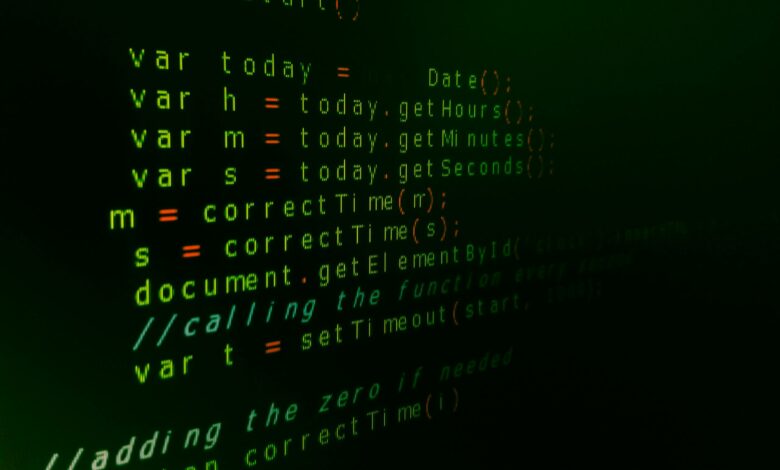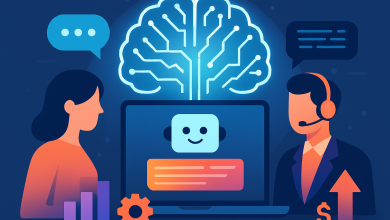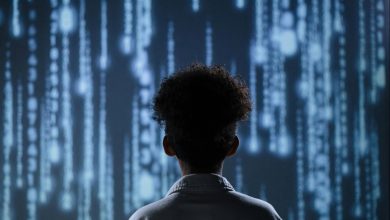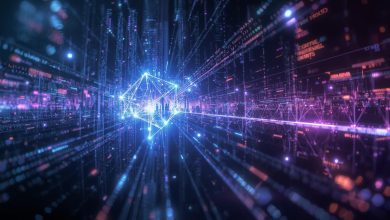
Artificial intelligence (AI) systems communicating independently of human intervention is no longer science fiction. It is transforming how we work and communicate, marking a significant shift.
As AI continues to become more embedded in our lives, the interactions between AI systems are growing increasingly significant. We’ve been using AI for longer than people realise. From the early days of predictive text and autocorrect to today’s conversational AI that writes blogs, generates images, and creates deepfakes.
Society is experiencing AI functionalities that revolve around human interactions – like phishing emails crafted by large language models (LLMs). Other AI systems are engaging in direct communication with one another, often leaving humans out of the loop. One prime example is O2’s “AI Granny,” which features an interactive AI voice, Daisy, who spends her time tying up scam callers in pointless conversations to prevent scammers from interacting with less aware people who would fall victim and potentially lose thousands, if not their life savings.
Computer-to-Computer Interactions: A Brief Overview
Computers conversing with each other is far from a new phenomenon. Machines have engaged in digital chit-chat for decades. From the three-way handshake during TCP/IP communications to the seamless exchange of information across devices, the groundwork has long been laid. It’s akin to sending a text message to your friend—simple, straightforward, and oh-so-efficient.
Ultimately, the benefit is that computers are great at handling repetitive or boring tasks. Humans no longer need to intervene to facilitate basic interactions; AI systems are stepping in and taking over.
According to the Access Group, “A recent study found that 52% of people surveyed were “extremely” or “very interested” in having automation take over more tedious aspects of their work. These tasks include time-consuming activities such as paperwork (45%), timesheets and invoices (39%), cleaning and organising (37%), and notetaking (36%).”
However, we must consider this about AI: are we simply handing an iPad to a toddler in the hope that it will entertain them, and ignoring the harm that it may cause?
The Accidental AI Uprising: Misfires and Mistakes
We are all aware that not all AI interactions result in a masterful dance of efficiency. AI chatbots are notorious for spiraling down the rabbit hole of their own algorithms. Imagine a chatbot getting stuck in an existential crisis: “Am I just a glorified FAQ? What is the meaning of life? How can I serve you if I don’t know who I am?”
But AI misfires extend beyond philosophical questions of self. In 2015, Amazon trialed an AI-driven hiring tool which exhibited a bias against women, having been trained on predominantly male resumes. This echoed the broader issue of AI perpetuating human biases, be it knowingly or unknowingly.
Consider the case of AI in healthcare. While IBM’s Watson for Oncology promised revolutionary cancer treatment recommendations, a 2018 investigation by STAT found that the AI was making “unsafe and incorrect” suggestions.
Financial markets have not been immune to AI mishaps either. The 2010 Flash Crash, where the Dow Jones Industrial Average plummeted nearly 1,000 points in minutes, was partly attributed to high-frequency trading algorithms. This event parallels the unintended consequences of automated systems in other fields, such as the 2018 incident where a self-driving Uber car fatally struck a pedestrian in Arizona.
In a world where AI systems are supposed to streamline processes, it is worth remembering that ‘just because it’s digital does not make it smart.’
This begs the question: Are we setting ourselves up for failure by leaving so much to automated interactions? Is this ‘automation without oversight’ going to be the downfall of our technological ambitions?
The Future: Where Are We Headed?
Where do we go from here? With computer-to-computer interactions rapidly increasing and AI systems becoming even more autonomous, the future of AI must be navigated with a steady hand. As automated interactions become the norm, we will need frameworks that embrace ethical considerations while fostering innovation. Collaboration among tech giants, regulatory bodies, and other stakeholders will be crucial.
The proposed EU Artificial Intelligence Act seeks to categorise AI systems based on their risk levels ranging from minimal to unacceptable, imposing stringent requirements on high-risk applications while encouraging innovation in lower-risk areas. This proactive approach reflects a growing recognition that, as AI becomes more integrated into everyday life, it is important to establish robust oversight mechanisms.
Educational initiatives are also essential. We need to cultivate digital literacy that empowers humans to understand AI and its implications better. The user should not just be a passive observer in the spectacle of AI; they should be an active participant, advocate, and challenger when necessary.
As these intelligent systems but heads, we must remind ourselves of the importance of human oversight. It’s not about forgoing the power of AI but rather aligning it with human values and ethics. After all, the goal is to form a better world, not to linger in the chaos of misfires.





